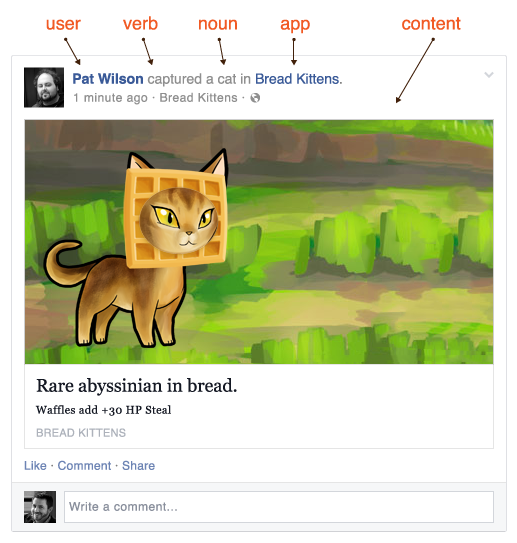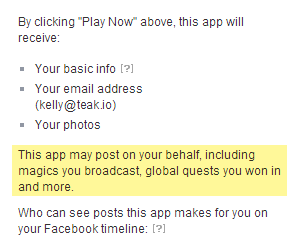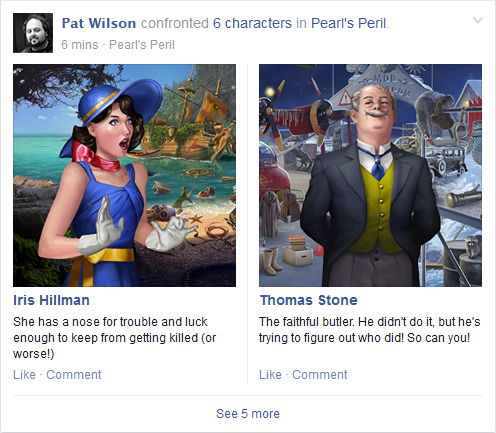
There are a lot of different ways to build sharing into an app. One of the hurdles many people run into is figuring out which sharing techniques to use and when to use them.
This article is about the main workhorse of social sharing: The Open Graph Story.
Telling the story of Your App
An Open Graph Story is different from a regular post because it allows you to add an action verb that describes what the user did. This is what makes them “stories”.
In the game Bread Kittens, you can capture cats by throwing bread on their heads. So, the stories that get shared to Facebook look like this:

These posts are about activity. They highlight the cool things that people do in your app. This creates a click-able story that represents what your app is about.
What makes an Open Graph Story
To make your own stories, you need three components:
A verb/noun pair that describes something interesting that a user does in your app (ex. captured a cat.)
The action must be triggered by an event that the user knows they did (ex. Pat must know that he captured a cat in the game.)
There can be multiple objects within each story (ex. a Siamese cat and a Tabby cat.)
Implicit vs Explicit
There are two ways users can share Open Graph stories: implicitly or explicitly.

With implicit stories, the user gives permission to post when they log in with Facebook. From then on, the story can be shared each time the event is triggered. These stories show only in the feeds of a user’s friends and never on their timeline.
Explicit events require permission from the user each time they want to share the story. These stories are given more weight by Facebook, and are shown to more users and therefore get more clicks per post. Explicit stories show up in both the news feed and on a user’s timeline.
While explicit stories get more clicks per post, implicit stories result in more posts overall. Therefore, a healthy mixture of implicit and explicit Open Graph stories will be most successful.
The End of Spamville
The Open Graph story format is Facebook’s preferred sharing format. It allows them to group similar posts together using some algorithmic magic, thus reducing spamminess.

As a developer, this means you can share more of these posts without worrying about overloading your users’ friends. Rather than seeing six posts, friends see one post with two images and an option to view more.
If a user triggers a significant number of events, Facebook may hold stories and release them at a later date (sometimes, as many as five days later).
I’m Here to Help
When should you use an Open Graph Story? When your users do cool stuff. Your users are your biggest asset. Let them sing your praises with the stories they share.
If you have questions, you can reach me here: kelly@teak.io
– Kelly

